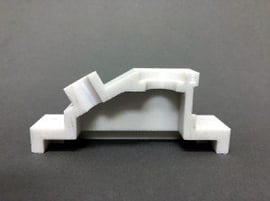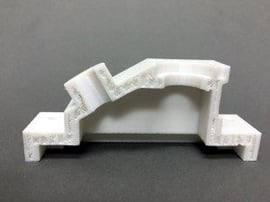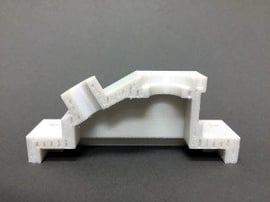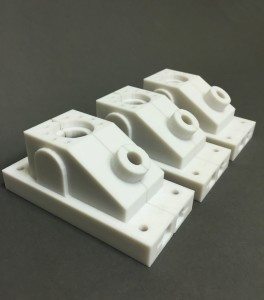When printing Fuse Deposition Models (FDM) models, we can adjust the build density of the parts. This is very beneficial for you because the parts can be better tailored to your needs. Below are the three different densities that can be printed, and how they will be effective.
Solid
A solid part density will build the part as filled in as possible. A part with a solid interior is the most common part density used. A part with this density can be used for reasons such as: show models, fixtures, concept testing, and design review.

Sparse
A substantial amount of material and time can be saved by using the Sparse interior modes. Having a sparse part density builds a part with a honey comb interior rather than solid. Unless the FDM part is being used in a high stress application, then the difference in strength will never be noticed.

Double Dense
Although the name may be slightly misleading, Double Dense parts are in between the solid and sparse part density. An FDM part with a double dense still has honey combed, but fills in the interior walls twice as much as a sparse density. This density is beneficial because there are some cost savings due to less material being used, and the part can still be used for more high stress applications than sparse density.

As you can see from the picture below, regardless of the part density, the exterior of the part is not affected.









.jpg)

.png)

.png)

